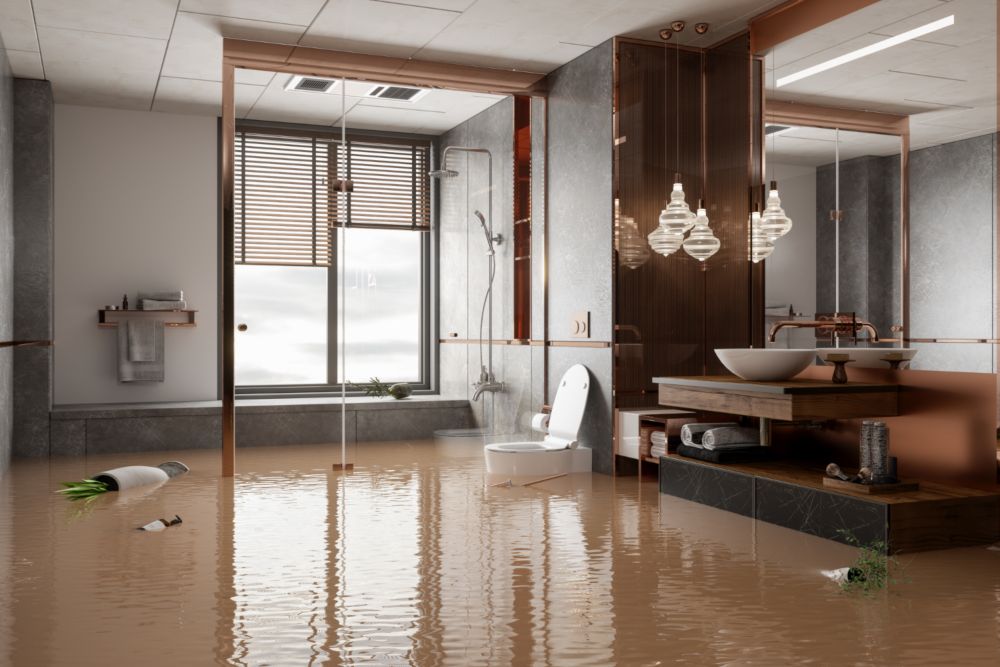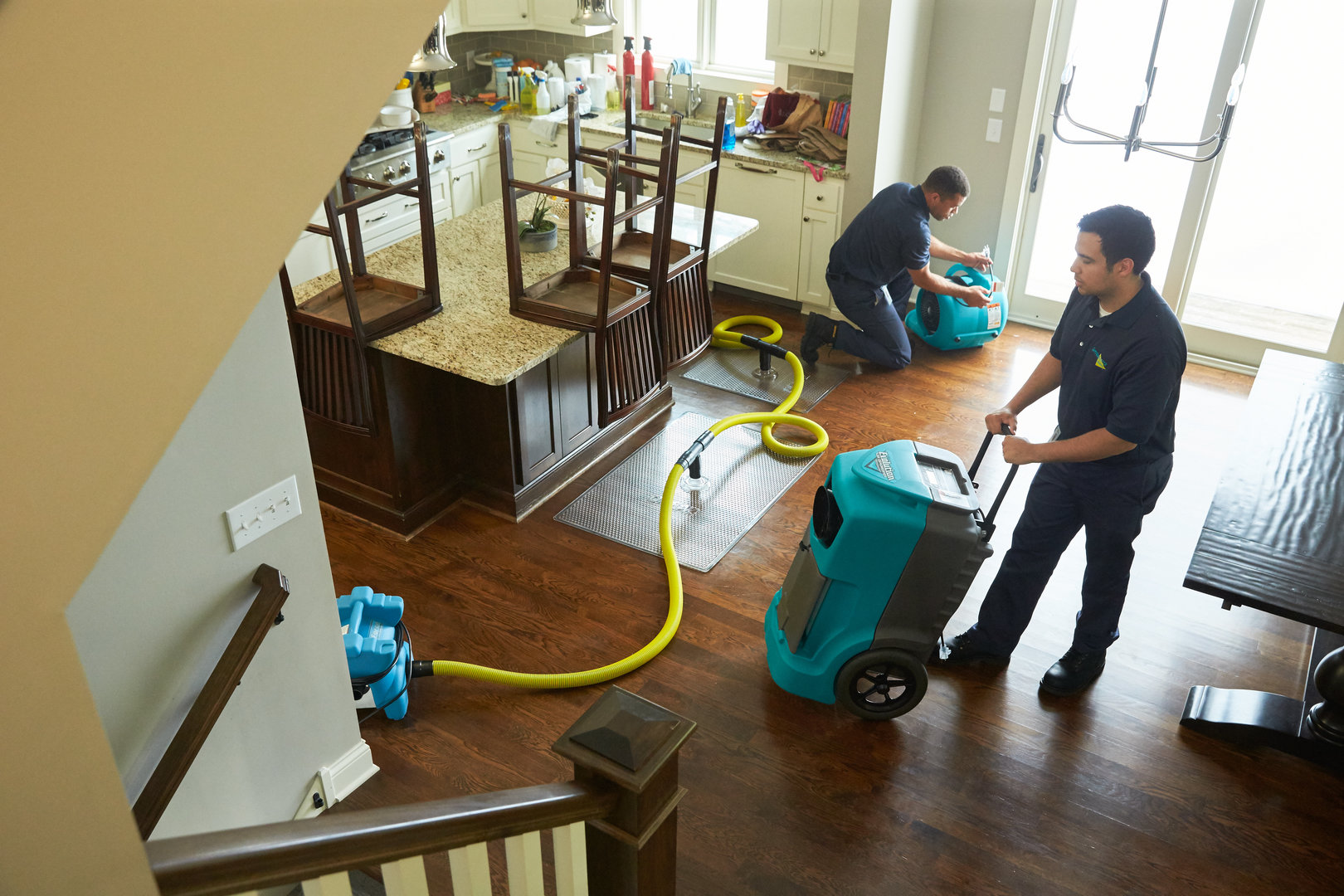Expert Leak Detection Philadelphia: Guarding Your Building Against Water Damage
Expert Leak Detection Philadelphia: Guarding Your Building Against Water Damage
Blog Article
Emergency Situation Water Damage Repair: Swift Response to Reduce Further Damage
Water damage can strike all of a sudden and leave damaging impacts on homes and services. When encountered with such a circumstance, a swift feedback is vital to reduce further damages and avoid possible carcinogen. What specifically does emergency situation water damages remediation require? In this discussion, we will certainly look into the significance of prompt action, the analysis process, the steps entailed in water extraction and drying out, mold prevention and removal, and ultimately, the reconstruction of the affected area. By recognizing the seriousness and thorough nature of this process, you will obtain valuable understandings right into how experts take on emergency water damage, making certain a swift and efficient response.
Significance of Swift Reaction

One of the major reasons swift response is important in water damages remediation is to avoid the growth of mold and mildew and mildew. Mold and mildew can begin to expand within 24 to 2 days of water exposure, and as soon as it takes hold, it can spread quickly throughout the affected location. Mold and mildew not only triggers further damage to the framework of the building but likewise poses wellness threats to residents. By responding promptly, experts can thoroughly dry the location and prevent the development of mold, minimizing the demand for extensive removal and guaranteeing the safety and security of those entailed.
Water damages can be devastating, particularly when it influences personal things of financial or sentimental value. Acting quickly allows experts to assess the damage and implement proper repair strategies to salvage as much as possible.
Examining the Level of Damages
To effectively address the consequences of water damage, it is important to quickly evaluate the level of the damage inflicted upon the damaged location. Examining the degree of water damage is a vital step in the repair procedure as it helps remediation specialists establish the ideal strategy and develop a reliable remediation strategy.
During the evaluation, reconstruction professionals thoroughly take a look at the affected location to determine visible indications of damage, such as water stains, warped materials, and mold and mildew development. They likewise utilize specialized devices to spot covert damages, such as dampness meters and thermal imaging cams (home inspector philadelphia). This detailed examination permits them to accurately figure out the level of the damage and develop a customized restoration plan
Since it aids specialists prioritize their initiatives,Analyzing the degree of water damages is crucial. They can determine areas that require instant focus, such as standing water removal and drying out, to avoid further damage and reduce the threat of mold development. They can also establish the areas that require fixings or replacement, making sure that no damage goes untreated or undetected.
In addition, a detailed assessment supplies useful details for insurance coverage functions. It helps house owners and insurance policy adjusters understand the extent of the damage, which is important for submitting accurate insurance policy claims and getting the ideal insurance coverage.
Water Removal and Drying Out Refine

The water removal and drying out process is an important action in water damage repair, as it entails the removal of excess water and the thorough drying of the affected area to avoid additional damage and reduce the danger Get the facts of mold and mildew development. After analyzing the degree of the water damages, the next step is to remove the water from the affected area. This is commonly done making use of specific devices such as dehumidifiers, vacuums, and pumps. These devices are developed to effectively and successfully get rid of water from various surfaces, consisting of carpetings, wall surfaces, and floors.
This step is important in stopping second damages, such as structural damage and the development of mold and mildew. The drying procedure might take a number of days, depending on the level of the water damage and the products included.
It is very important to make certain that the affected area is totally dry prior to proceeding with any kind of repair work or reconstruction. Failing to thoroughly dry the area can lead to lasting problems, including damaged frameworks, mildewy odors, and the growth of mold and mildew and mold. Professional water damage remediation business use dampness detection tools to guarantee that the damaged area is completely dry prior to proceeding to the next step.
Mold And Mildew Avoidance and Remediation

To stop mold growth, it is important to deal with water damage promptly. The initial step is to recognize and repair the resource of the water breach. When the source is dealt with, the afflicted area needs to be completely dried to stop wetness from remaining. This may involve the use of dehumidifiers, air movers, and other customized devices check these guys out to eliminate excess moisture from the air and surface areas.
In situations where mold development has already happened, remediation is necessary to eliminate the mold and avoid its return. This involves the careful removal and disposal of damaged products, such as drywall or rug, to make certain that all traces of mold and mildew are eradicated - water damage restoration philadelphia. It is important to note that mold removal ought to be accomplished by professionals who have the essential training and tools to safely get rid of and take care of mold and mildew
Bring Back the Affected Area
After attending to mold avoidance and removal, the next critical step in water damages restoration is bring back the damaged area to its pre-damage problem. This step includes a comprehensive procedure to make sure that all traces of water damage are eliminated and the affected area is fully fixed.
First of all, it is necessary to extensively dry out the area to stop any kind of helpful resources additional damages and to hinder the development of mold and mildew and mildew. This might entail making use of specialized drying out tools, such as dehumidifiers and industrial-grade followers, to remove all wetness from the damaged surfaces.
Once the area is totally dry, the restoration procedure can start. This may include replacing or repairing harmed architectural elements, such as floor covering, ceiling, or drywall floor tiles. It is necessary to address any type of underlying concerns that may have triggered the water damage, such as leaky pipelines or defective pipes, to stop future cases.
Furthermore, recovering the afflicted area may additionally consist of repainting wall surfaces, changing damaged components, and thoroughly cleansing and sterilizing the area. This ensures that not just is the area structurally sound, however it is additionally aesthetically pleasing and safe for occupancy.
Final Thought
Finally, quick action is crucial in lessening additional damage triggered by water emergency situations. Evaluating the level of damages enables effective water removal and drying processes to be carried out. In addition, mold and mildew avoidance and removal are important in recovering the affected area. On the whole, prompt action and comprehensive restoration procedures are key to mitigating the adverse influences of water damages.
Swift reaction is of utmost relevance in water damages repair to lessen further damages and mitigate potential risks.Throughout the evaluation, restoration specialists extensively analyze the affected location to determine visible signs of damages, such as water spots, warped materials, and mold growth.The water removal and drying out procedure is an essential action in water damage repair, as it includes the elimination of excess water and the comprehensive drying of the affected location to stop further damages and reduce the threat of mold development. After assessing the level of the water damages, the next step is to remove the water from the afflicted location. mold inspection philadelphia.Reliable mold and mildew avoidance and removal are important in water damage repair to make sure the security and stability of the affected area
Report this page